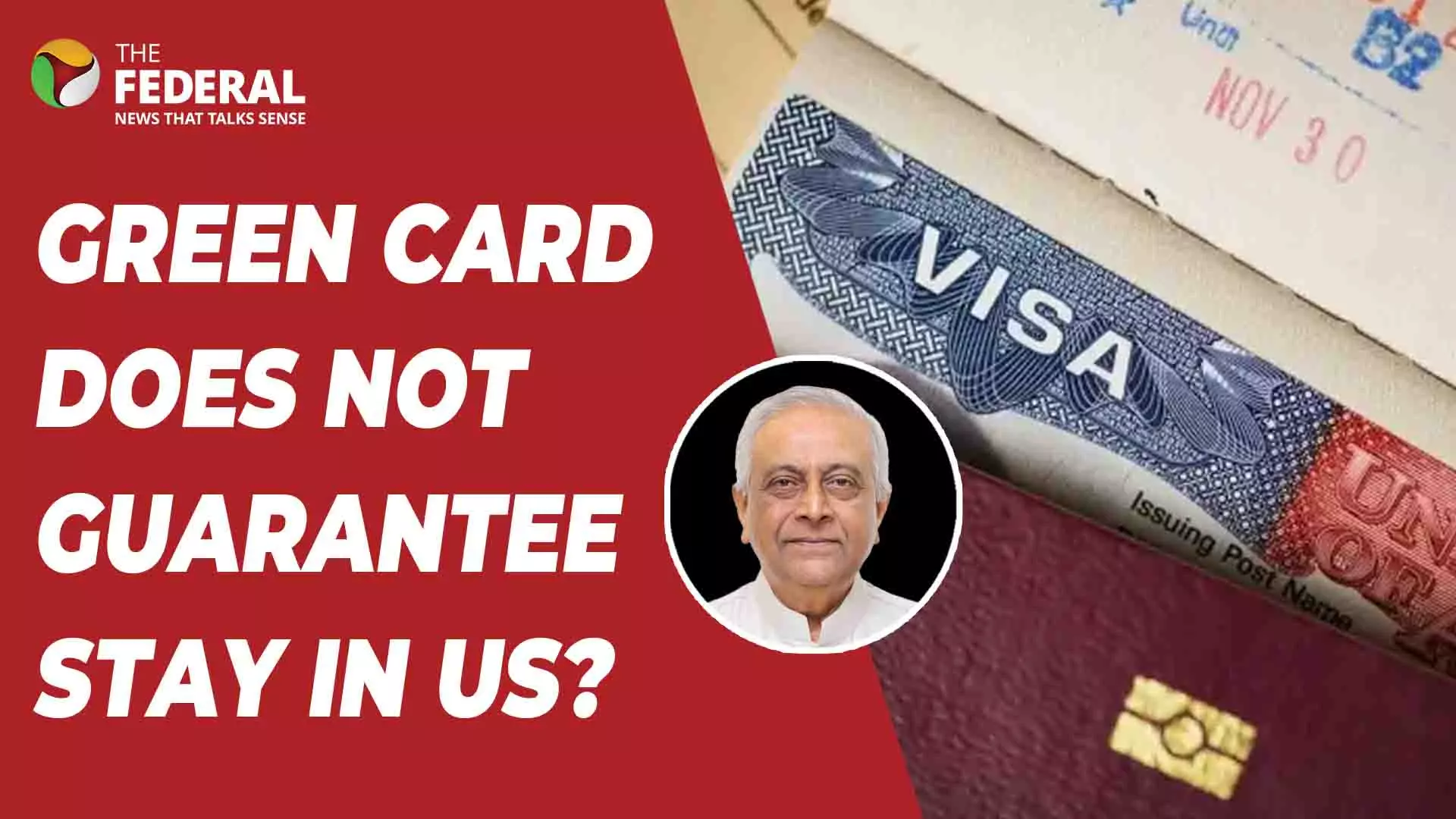
Green cards, F1 visas under fire in US crackdown; should Indians worry?
Student protests, visa rejections, and Green Card worries—how deep is the US visa crackdown?

With Donald Trump's return as the US President, his campaign promises on immigration are being swiftly acted upon, prompting fear, frustration, and a re-evaluation of how India and the US navigate the complex visa matrix.
From the cancellation of bot-booked appointments to the record spike in F-1 student visa rejections and travel warnings for Indian Green Card holders—there has been a whirlwind of US visa-related developments recently. In an exclusive interview with The Federal’s Nisha PS, senior journalist Sridhar Krishnaswami broke these down.
Bot crackdown exposes rot
The cancellation of 2,000 visa appointments by the US Embassy in India has laid bare the depth of the visa appointment scam. According to Krishnaswami, the fact that people were paying Rs 30,000–35,000 for early booking slots clearly revealed “how rotten the system is”. He noted that such backdoor practices denied rightful applicants a fair shot and added, “This is something the embassy should have done a long, long time ago.”
With bots and agents crowding the system, genuine applicants were left waiting inordinately long. Krishnaswami stressed that visa appointments are not like booking bus or train tickets—you can't outsource such a sensitive national security matter. Now that the embassy is addressing it, he hopes “serious and legitimate” applicants will have a better shot.
Also read: US student visa rejection rate zooms to 10-year high, Indians to be hit: Report
Long wait for tourist visas
Despite this clean-up, B1/B2 visa wait times are still high—reportedly around 12 months. Krishnaswami doesn’t see instant relief. “Even though the system is being cleansed, don’t expect the wait time to drop immediately,” he warned.
He highlighted longstanding concerns among US conservatives about B1 misuse, particularly by IT companies. “There has been a genuine feeling that people coming in on business visas are not always sticking to the original purpose,” he said.
F-1 rejections and student protests
The US student visa (F-1) rejection rate has hit a 10-year high. While protests on American campuses are not new, recent student-led demonstrations—particularly around Gaza and Israel—have added a new layer of tension. “This is not the Vietnam era,” Krishnaswami said, referencing the difference in how student dissent is perceived now under the Trump administration.
He pointed out that while students have a First Amendment right to protest, their visa conditions clearly define their primary purpose: education. “You are not here to support terrorist organizations like Hamas,” he added, referencing Trump’s framing of some protests as pro-Hamas rather than pro-Palestinian.
Also read: US embassy cancels 2,000 visa appointments made by agents’ ‘bots’
Shift in tone and policy
Krishnaswami emphasized that this isn’t a new direction—it’s a continuation of Trump’s campaign promises. “Visa abuse and immigration were top of the agenda that jettisoned him to the White House in 2025,” he explained. As such, increased scrutiny at borders and visa offices is just the beginning of a broader policy tightening.
Even the Indian Ministry of External Affairs (MEA), he noted, acknowledged that students must follow visa guidelines and that India cannot interfere in US immigration decisions. “It’s a sovereign matter,” he said bluntly.
Green card concerns grow
Green Card holders—especially those of Indian origin—are now facing heightened scrutiny at ports of entry. Krishnaswami outlined the importance of following US residency requirements strictly. “There have been cases where people take a Green Card and then spend most of their time outside the US. That’s not how it works,” he said.
Immigration officers now ask questions about how long one has been out of the US, and any deviation could lead to intense questioning. “It can make you uncomfortable, but it’s not harassment if you’re following the rules,” he added.
Also read: Trump’s $5M gold card visa replaces EB-5, impacts Indian immigrants
No guarantees, even with a visa
Perhaps the most sobering takeaway was Krishnaswami’s reminder that “a visa is not a guarantee of entry.” Final approval lies with the officer at the port of entry. “He sees your entire travel history. He knows how long you stayed, if you’ve asked for an extension, and more,” he explained. Simply holding a visa does not entitle someone to automatic entry.
The current US visa environment is rapidly evolving under the Trump administration’s second term. For Indian students, professionals, and Green Card holders, the road ahead appears fraught with greater checks and tighter rules—but, as Krishnaswami emphasizes, staying within the legal framework is the best way forward.
The content above has been generated using a fine-tuned AI model. To ensure accuracy, quality, and editorial integrity, we employ a Human-In-The-Loop (HITL) process. While AI assists in creating the initial draft, our experienced editorial team carefully reviews, edits, and refines the content before publication. At The Federal, we combine the efficiency of AI with the expertise of human editors to deliver reliable and insightful journalism.

